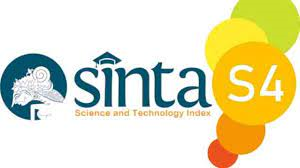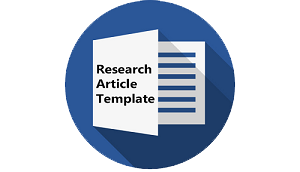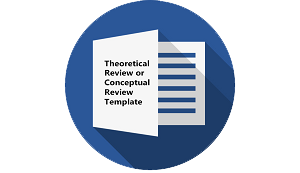The Use of Code-Mixing and Code-Switching: Challenge Identification in Language Online Mass Media
DOI:
https://doi.org/10.30957/ijoltl.v9i1.773Keywords:
code-mixing, Tempo Magazine, qualitative, researchAbstract
This study is aimed at investigating types of code-mixing and code-switching as challenges in language identification in online mass media. Journalists mostly mix language to emphasize particular topics and to reiterate them as well. It becomes a challenging task to identify automatic language used with special language. It is focused on articles published in the mass media in Tempo Magazine 2023, in which the media illustrate Indonesian news, the economy, and politics. The method of qualitative research is used to describe the use of code-mixing and code-switching as challenge identification in mass media with documentary techniques. The technique conducted involves reading, studying, identifying, classifying, and analyzing data. Codified standardized English proposes intra-sentential switching, inter-sentential switching, tag switching, and intra-word switching. Meanwhile, the types of code-mixing, insertion, alternation, and congruent lexicalization are identified and analyzed. The data analysis used a process of organizing, analyzing, and interpreting qualitative data into code-switching and code-mixing classifications. The study result is found that 14 code-mixing and code-switching were found
Downloads
References
Arianto, T., & Sopha, D. (2022). Code Mixing Used In The Articles Of Online Media News Kabar Medan. Philology: Journal of English Language and Literature, 2(2), 97-106. doi:10.32696/pjell.v2i2.1355 DOI: https://doi.org/10.32696/pjell.v2i2.1355
Aziz, Z. A., Achmad, D., & Fadlun, M. (2019). What Types of Codes are Mixed in Indonesia?: an Investigation of Code Mixing in a Magazine. English Education Journal (EEJ), 10(2), 196-211.
Aziz, Z. A., Achmad, D., & Fadlun, M. (2019). What Types of Codes are Mixed in Indonesia?: An Investigation of Code Mixing in a Magazine. English Education Journal (EEJ), 10(2), 196-211.
Baharuddin. (2022). The Reason for Performing Code-switching and Code-mixing in Indonesian-English by the Elite People in Makassar. Ideas: Journal of English Language Teaching & Learning Linguistics and Literature, 10(1), 893-904. doi:10.24256/ideas.v10i1.2874 DOI: https://doi.org/10.24256/ideas.v10i1.2874
Ejupi, V., Siljanovska, L., & Iseni, A. (2014). The Mass Media and Persuasion. European Scientific Journal, 10(14), 636-646. doi:10.24042/ee jtbi.v13i2.7051
Handayani, N. D. (2017). Insertional Code-Mixing by the English Department Students at Putera Batam University. English Language and Teaching Research, 1(1), 252-272.
Haryanto, H. (2020). Enhancing English Learning Achievement through Problem Based Learning: An Action Research at SMAN 1 Jepara. IJOTL-TL: Indonesian Journal of Language Teaching and Linguistics, 5(2), 81-94. https://doi.org/10.30957/ijoltl.v5i2.620
Haryanto, H. (2023). Improving the Students ‘English Learning Outcomes through Team Game Tournament Model in English For Islamic Education Course. IJOTL-TL: Indonesian Journal of Language Teaching and Linguistics, 8(2), 72-89. https://doi.org/10.30957/ijoltl.v8i2.733
Helmie, J., Halimah, & Hasanah, A. (2020). Code Mixing in College Students’ Presentation: A Case in an Intercultural Communication Class. Indonesian Journal of EFL and Linguistics, 5(2), 403-417. doi:10.21462/ijefl.v5i2.249 DOI: https://doi.org/10.21462/ijefl.v5i2.249
Jendra, M. I. (2001). Sociolinguistics: the Study of Society's Languages. Yogyakarta: Graha Ilmu.
Jimmi, & Davistasya, R. E. (2019). Code-Mixing In Language Style Of South Jakarta Community Indonesia. Premise: Journal of English Education and Applied Linguistics, 8(2), 193-213. doi:10.24127/pj.v8i2.2219 DOI: https://doi.org/10.24127/pj.v8i2.2219
Koch-Baumgarten, S., & Voltmetr, K. (2010). Public Policy and Mass Media: The Interplay of Mass Communication and Political Decision Making. New York: Routledge. DOI: https://doi.org/10.4324/9780203858493
Kristianti, T. (2022). Analisis Campur Kode Dan Alih Kode Dalam Dialog Web Serieslayangan Putus. Sirok Bastra, 10(2), 189-198. doi:10.37671/sb.v10i2.396 DOI: https://doi.org/10.37671/sb.v10i2.396
Langit, A. N., Hikmah, I., & Surwanti, D. (2022). Code Switching and Code Mixing on “Ngobrol Sore Semaunya†Podcast. International Journal of English Learning and Applied Linguistics, 1-11. doi:10.21111/ijelal.v3i1.7410 DOI: https://doi.org/10.21111/ijelal.v3i1.7410
Lubis, S. E. (2021). Code Mixing Found in Applaus Magazine. IJEAL International Journal of English and Applied Linguistics, 1(1), 6-18. doi:10.47709/ijeal.v1i1.966 DOI: https://doi.org/10.47709/ijeal.v1i1.966
Mpofu, P. (2023). Code Mixing in Kwayedza: Language Subversion and the Existence of African Language Newspapers. African Journal Studies, 43(4), 15-30. doi:10.1080/23743670.2023.2179091 DOI: https://doi.org/10.1080/23743670.2023.2179091
Muysken, P. (2000). Bilingual Speech: A Typology of Code-Mixing. UK: Cambridge University Press.
Nahak, Y., & Bram, B. (2022). Code-Mixing And Code-Switching Uttered By Cinta Laura In Okay Boss Trans7’s Talk Show. Journey: Journal of English Language and Pedagogy, 5(1), 120-134. doi:10.33503/journey.v5i1.1831 DOI: https://doi.org/10.33503/journey.v5i1.534
Nikmah, I. F. (2019). Code Mixing in an Indonesia Novel Entitled Teman Tapi Menikah. Journal of English Language Teaching and Cultural Studies, 2(2), 96-104. doi:10.48181/jelts.v2i2.9098 DOI: https://doi.org/10.48181/jelts.v2i2.9098
Nuryanti, R., & Mahmud, M. (2022). Code-Mixing Used in WhatsApp Academic Groups Chats in English Literature in 2018 at Universitas Negeri Makassar. ELITERATE: Journal of English Linguistics and Literature Studies, 2(3), 85-94.
Pratama, P. A. (2022). Code Switching and Code Mixing in English Language Learning during Online Learning in Covid-19 Outbreak. Jurnal Pendidikan Bahasa Inggris Undiksha, 53-59. doi:10.23887/jpbi.v10i2.44772 DOI: https://doi.org/10.23887/jpbi.v10i2.44772
Putri, K. R., Utami, N. M., & Ariyaningsih, N. N. (2022). Code Switching And Code Mixing Found In The Shallow Stuff's Utterance. Lingual: Journal of Language and Culture, 13(1), 34-44. doi:10.24843/LJLC.2022.v13.i01.p04 DOI: https://doi.org/10.24843/LJLC.2022.v13.i01.p04
Rakhmannia, E. D. (2022). The Implementation Of Code Mixing And Code Switching In EFL Class. Exposure: Jurnal Pendidikan Bahasa Inggris, 11(2), 466-472. doi:10.26618/exposure.v11i2.9059 DOI: https://doi.org/10.26618/exposure.v11i2.9059
Rosdiana, A. (2017). The Bilingual Brain And The Second Language Learning. Edulingua, 4(1), 7-20. doi:10.34001/edulingua.v4i1.549
Rosmiaty, Ratnawaty, & Muhri, A. (2020). Investigating Code-Mixing As Persuasive Strategies In Advertising: A Study Of Code-Mixing In Indonesian Commercial Context. ELT WORLDWIDE: Journal of English Language Teaching, 7(1), 70-76. doi:10.26858/eltww.v7i1.15108 DOI: https://doi.org/10.26858/eltww.v7i1.15108
Sudijono, A. (2006). Pengantar Statistik Pendidikan. Jakarta: PT. Raja Grafindo Persada.
Syafryadin, & Haryani. (2020). An Analysis of English Code Mixing Used in Indonesian Magazine. JOLLT Journal of Languages and Language Teaching, 381-390. doi:10.33394/jollt.v8i4.2465 DOI: https://doi.org/10.33394/jollt.v8i4.2465
Syafryadin, R. I., & Febriani, R. B. (2020). An Analysis of Code Mixing Used in Opinion Rubric of Kompas Newspaper. English Education: Jurnal Tadris Bahasa Inggris (Ee: Jtbi), 13(2), 173-193. doi:10.24042/ee-jtbi.v13i2.7051
Tarihoran, N., & Sumirat, I. R. (2022). The Impact of Social Media on the Use of Code Mixing by Generation Z. International Journal of Interactive Mobile Technologies (iJIM), 16(7), 54-69. DOI: https://doi.org/10.3991/ijim.v16i07.27659
Tokuhama-Espinosa, T. (2003). The Multilingual Mind: Issues Discussed by, for, and about People Living with Many Languages. Westport: Greenwood Publishing Group.
Trousdale, G. (2010). An Introduction to English Sociolinguistics. Edinburgh: Edinburgh University Press. DOI: https://doi.org/10.1515/9780748630004
Vionita, Shabri, I., Yanti, R., & Yalmiadi. (2023). An Analysis Of Types and Forms Of Code-Mixing In Indonesian Song Lyric By Saykoji. JPPISB: Jurnal Penelitian dan Pengkajian Ilmiah Sosial Budaya, 2(2), 140-147. doi:10.47233/jppisb.v2i1.770 DOI: https://doi.org/10.47233/jppisb.v2i1.770
Wardhaugh, R. (2010). An Introduction to Sociolinguistics 6th Ed. West Sussex, UK: Wiley-Blackwell.
Wardhaugh, R., & Fuller, J. M. (2015). An Introduction to Sociolinguistics 7th Ed. West Sussex, UK: Wiley Blackwell.
Downloads
Published
How to Cite
Issue
Section
License
Authors who publish with this journal agree to the following terms:
- Authors retain copyright and grant the journal right of first publication with the work simultaneously licensed under a Creative Commons Attribution-ShareAlike 4.0 International License that allows others to share the work with an acknowledgement of the work's authorship and initial publication in this journal.
- Authors are able to enter into separate, additional contractual arrangements for the non-exclusive distribution of the journal's published version of the work (e.g., post it to an institutional repository or publish it in a book), with an acknowledgement of its initial publication in this journal.
- Authors are permitted and encouraged to post their work online (e.g., in institutional repositories or on their website) prior to and during the submission process, as it can lead to productive exchanges, as well as earlier and greater citation of published work (See The Effect of Open Access).












